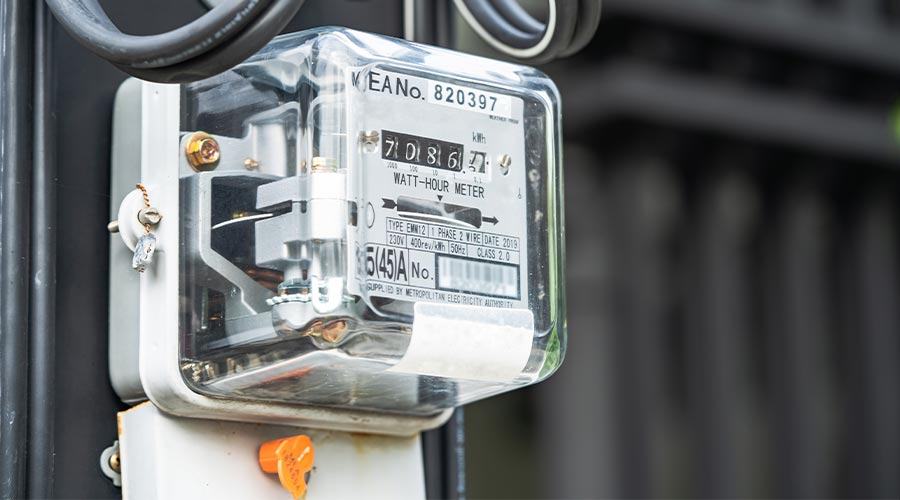Understanding Electricity Bills Helps Avoid Unpleasant Surprises
Price structures for electricity are changing as power grids and markets confront 21st century demands and exploit 21st century technologies. As a result, electricity bills may contain both new challenges and new opportunities. Understanding them will help facility managers avoid unpleasant surprises and be first in line for the benefits.
Electricity bills rarely spell out all price components or actual rates at which they are charged. While one may impute an average cost per kilowatt-hour (kWh), it is not a true electric rate. Instead, it's delineated in pricing schedules known as tariffs. Find them at utility websites or those of the governing regulatory body, such as a state Public Utility Commission (PUC). Typically written in legalese, translation is available through your utility account representative or the PUC's consumer advocate.
Start by finding the service class on the electric bill (e.g., EL-12A). To see the actual electric rate, find that same designation in the tariff. Rate classes are typically based on the type of customer and a peak demand range. Within the tariff for a given service class, one may find:
- A base monthly rate for maintaining a utility connection (which may also cover billing and metering).
- A charge per kilowatt-hour for one's consumption. The charge may vary within consumption blocks, such as $.04/kWh for the first 10,000 kWh, $.03/kWh for the next 100,000 kWh, etc.
- A charge per kilowatt-hour for the highest peak electric demand in a billing period .
- A fuel (or energy) adjustment charge to cover variations in fuel costs incurred by the utility in making power.
- A power factor charge that varies with how "cleanly" a facility uses power.
- A ratchet charge based on the highest peak demand seen in the last 12 months.
- Various program charges to cover energy efficiency incentives or other initiatives.
- Additional line items related to discounts and charges that pertain to specific customers: economic development discount, extra feeders or transformers, for example.
Many tariffs further differentiate major price components into supply and delivery rates, such as one charge per kilowatt-hour for supplying the power and another for transmitting and distributing the power. Medium-to-large customers — those with peak demands exceeding 1,000 kW — may also see their per-kilowatt-hour rates differentiated by time-of-use and time-of year, and their per-kilowatt-hour delivery rates broken down to separate charges for generation, transmission, and distribution, with further divisions based on distribution voltage.
Customers that buy their electricity from third party suppliers may find that only the delivery portion of a tariff applies, with pricing for supply being instead governed by their retail power contracts. Those that generate some of their power on-site may see even more complex rates.
While touring the tariffs, be sure to note if alternatives exist. A utility is required only to place a customer on an appropriate rate, not necessarily the lowest available rate. Customers may be eligible for several options, such as voluntary time-of-use pricing, if their peak load is below the level for mandatory time-of-use service. In certain cases, such as parking lot lighting, it may be cheaper to buy power under a time-of-use rate where power is used only at night since that rate may be much lower than during the day.
Changing Power Charges
As the energy and economic landscape has changed, PUCs have sought or entertained many options to take advantage. While some may view the resulting complexity as a program to ensure full employment for energy consultants, a more enlightened ratepayer may wish to sift through it for ways to cut costs — and maybe find new sources of revenue.
To manage new cost issues, some utilities are altering their rates to include factors not previously charged. As their local fuel prices become more volatile, for example, they may begin charging a monthly fuel adjustment charge (FAC) that allows them to flow through those varying costs rather than trying to recoup them in later rate proceedings. About 60 percent of utilities now levy FACs in various forms.
Rate reductions have also been seen. Where FACs are not in place, the sustained drop in natural gas pricing has caused some base rates to drop when utility fuel costs (both present and forward) fell to about half what they were only three years ago. In Pennsylvania, where the transition to deregulation stretched over a decade, "stranded costs" previously charged are disappearing as markets open up. Such charges were levied to cover utility expenses that could not otherwise be recouped if supply competition had been allowed.
More (and higher) ratchet charges are also being seen. Where previously set as a minimum demand charge — 50 percent of the peak seen in the last 12 months, for example — few customers had to pay that extra fee because their minimum peak demand never dropped below that level. In some areas, that minimum is now 80 percent or higher, thus catching more customers who reduced their peak demand through efficiency upgrades or other measures, or whose peak demand was cut by vacancies due to the recession.
Related Topics:












